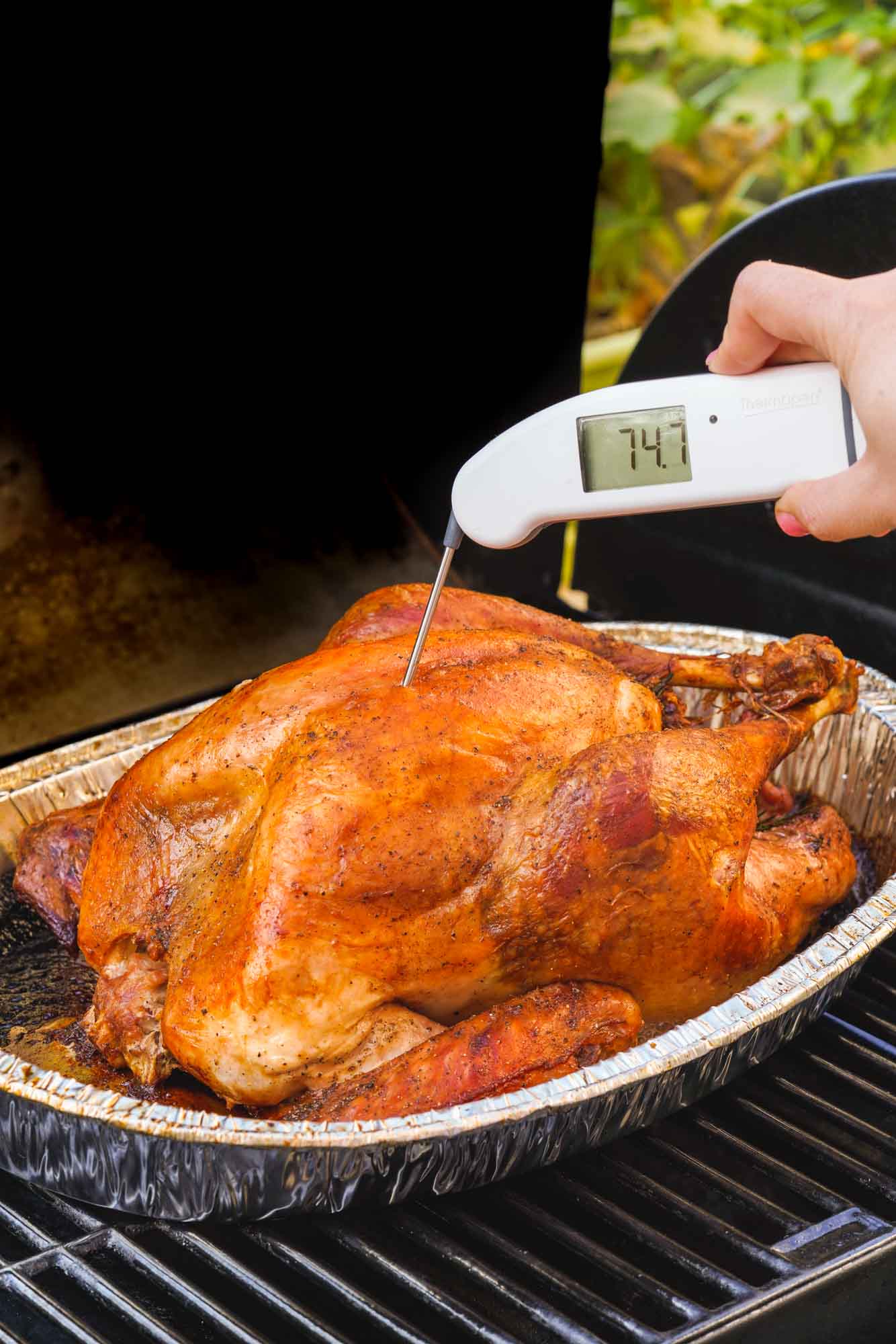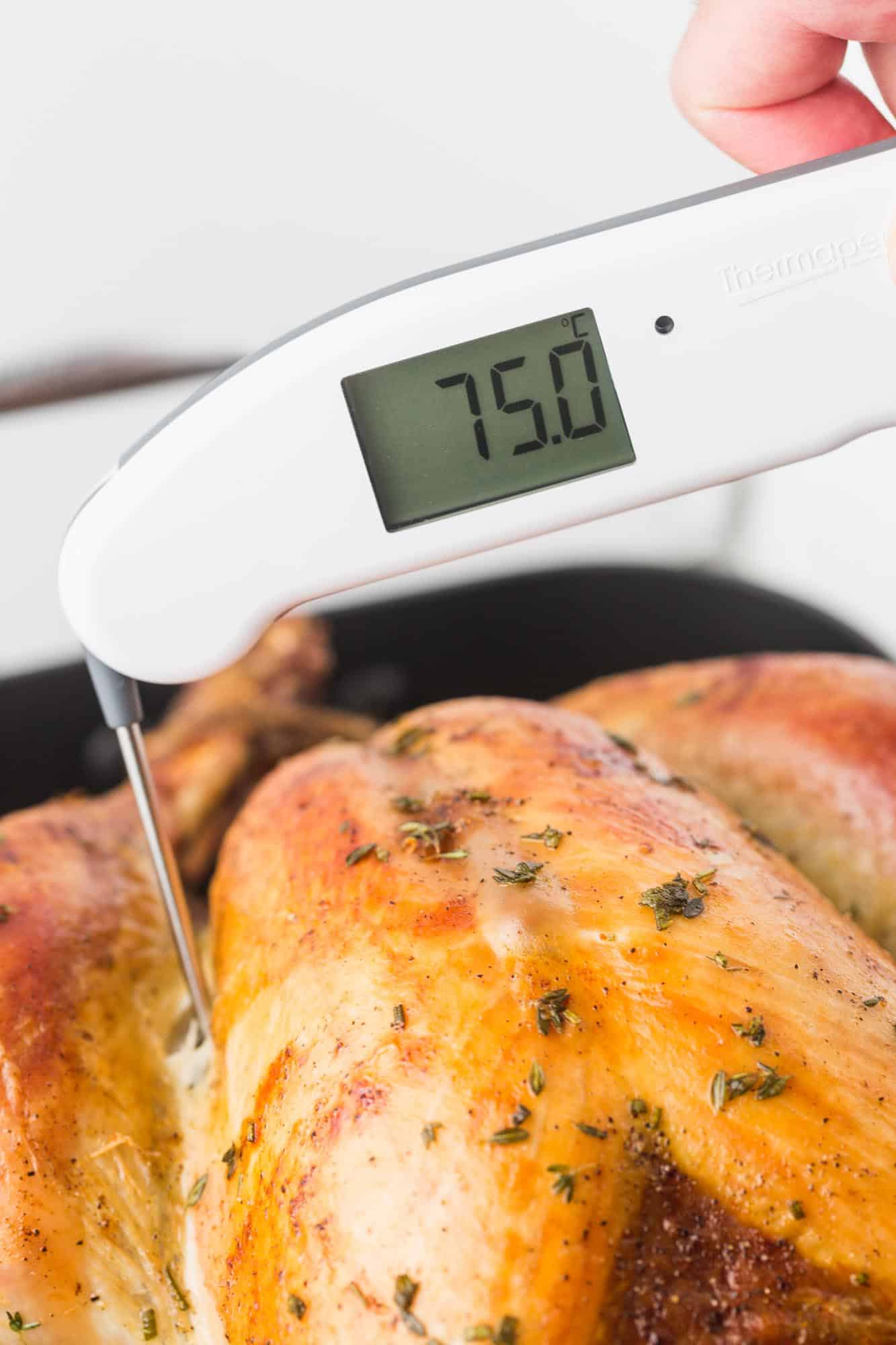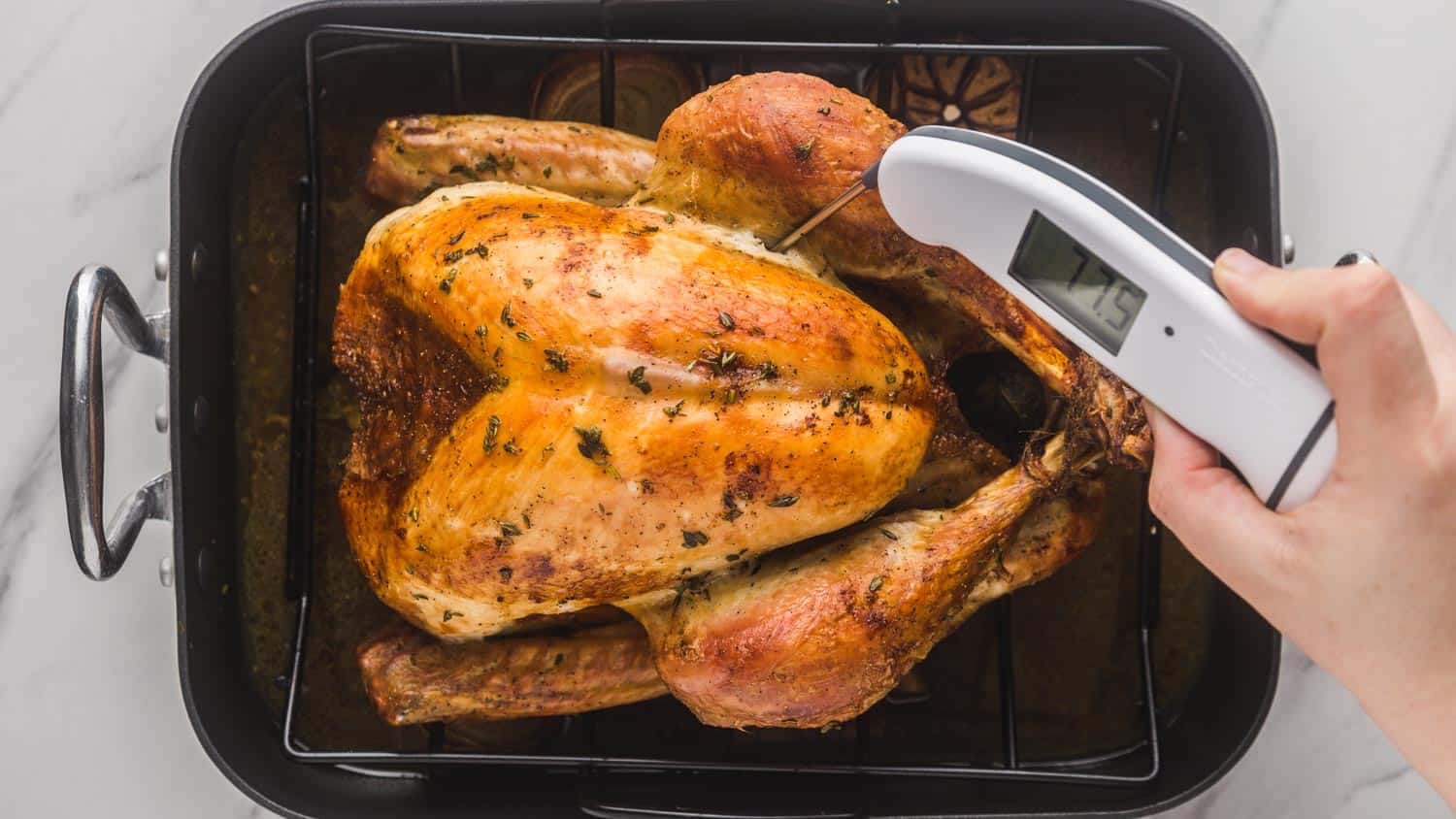A kitchen thermometer is an invaluable tool, and in this post, I will explain why it’s such an important tool, show you how to use it, and you will never ruin a gorgeous piece of meat ever again. We’ve all been there, bought an expensive piece of meat and it ended up shoe-leather tough that you couldn’t eat, or even worse, overcooked a holiday turkey that you cooked for your family. But it doesn’t have to be that way! You can totally prevent that from happening by investing in an instant thermometer, specifically in a Thermapen, and learning how to use it.
What is a Kitchen Thermometer?
An instant kitchen thermometer is a small probe thermometer that allows you to measure the internal temperature of your food. Foods like meat, poultry, and eggs need to reach a minimum temperature to kill harmful bacteria and prevent food-borne illness. It also allows you to cook your protein to your preferred level of doneness.
My favorite instant thermometer
If you’ve been following Little Sunny Kitchen for a while, you’d know that I love and always use my Thermapen One instant thermometer. I take product recommendations very seriously, because it’s your money that you’ll be spending. And the Thermapen is hands down the best kitchen thermometer that I’ve ever used, and the only probe that you need. It may be a little more expensive compared to other thermometers, but it’s well worth the money. Thermapen One is designed for easy use, and will give you an accurate reading in just ONE second! It’s also waterproof, comes with an LCD screen and backlight, and can be switched between °C and °F. So if you’re looking to invest in a fast and accurate kitchen thermometer, then Thermapen One is what you’re looking for.
How to use a kitchen themometer
If you’ve never taken the temperature of meat or poultry, it’s an incredibly simple task, and will ensure that your bird is moist and juicy and your beef is the perfect color of pink! Here’s what you need to do:
The Right Way to take the temperature of your turkey (or a chicken!)
We spent last Christmas in isolation, so we’re more excited than usual for Christmas this year as we’ll get to spend it with our loved ones. And I want you to make sure that your turkey is cooked to perfection! Probing poultry can be a little more tricky compared to probing meat, because white and dark meat cook at different rates. Also note that turkeys are full of bones and cavities compared to other meats, so you have to be careful when taking the temperature to get accurate readings. Here’s how:
Probing Other Meats
To check the doneness of beef, lamb, or pork. Always follow the advice above to check the temperature at the thickest part of the meat and avoid hitting a bone. Below are recommended temperatures that you should aim for when cooking meats:
Beef: 74°C/165°F for well done, 62°C for medium, and 52°C for medium rare.Lamb: 74°C/165°F for well done, 62°C for medium, and 52°C for medium rare.Pork: 62°C/145°C measured before removing from the heat source, plus an additional 3 minute rest time before carving/slicing and consuming.Sausages, burgers and minced (ground) meat: 71°C/160°F is the safe temperature for consuming.Salmon: 62°C/145°F is the perfect temperature for flaky, tender, and moist salmon.
Can’t find what you’re looking for? Find Thermapen’s Temperature Guide here.
Other Uses
Instant Thermometers can also be used for baking, jam and candy making. Baking: To make sure that your sponge cake is beautifully baked, it must reach 95-98°C (203-208°F). If you’re baking homemade bread with enriched dough (contains egg and milk), the temperature must reach 77°C (170°F). Yeast: Dry yeast is activated when it’s added to lukewarm water. Ever wondered what is the temperature of lukewarm water? We’re talking about 40-43°C (105-110°F) here! Candy: For soft ball stage (things like fudge and praline), aim for 112-116°C (233-240°F). For firm ball (caramel), aim for 118-120°C (244-250°F), and for hard ball (divinity and nougat) you’re looking at 121-130°C (250-266°F). If you’re making hard candy, like brittle or lollipops, aim for 149-154°C (300-310°F). Jam: Setting point for jam is 105°C (220°F).



